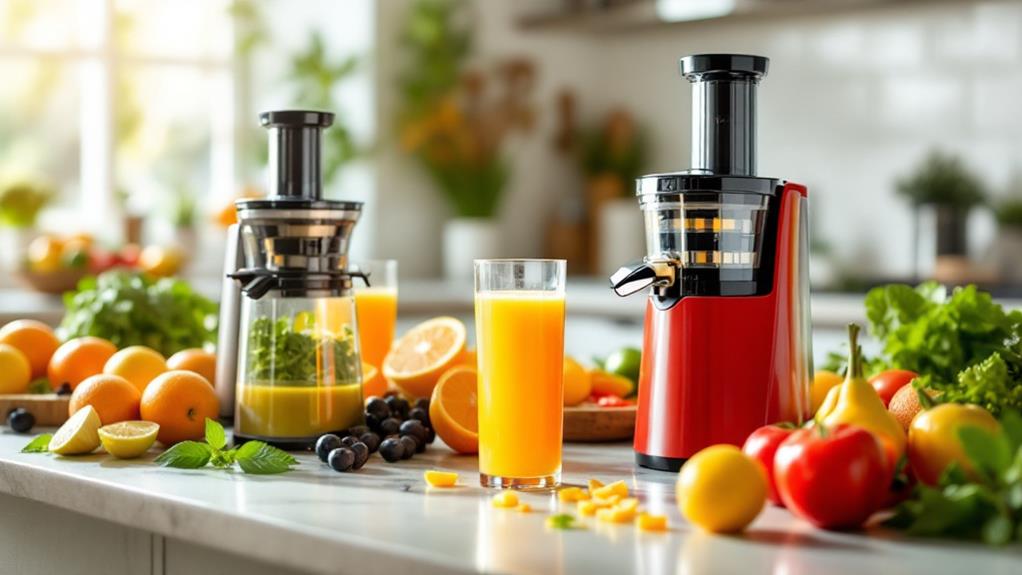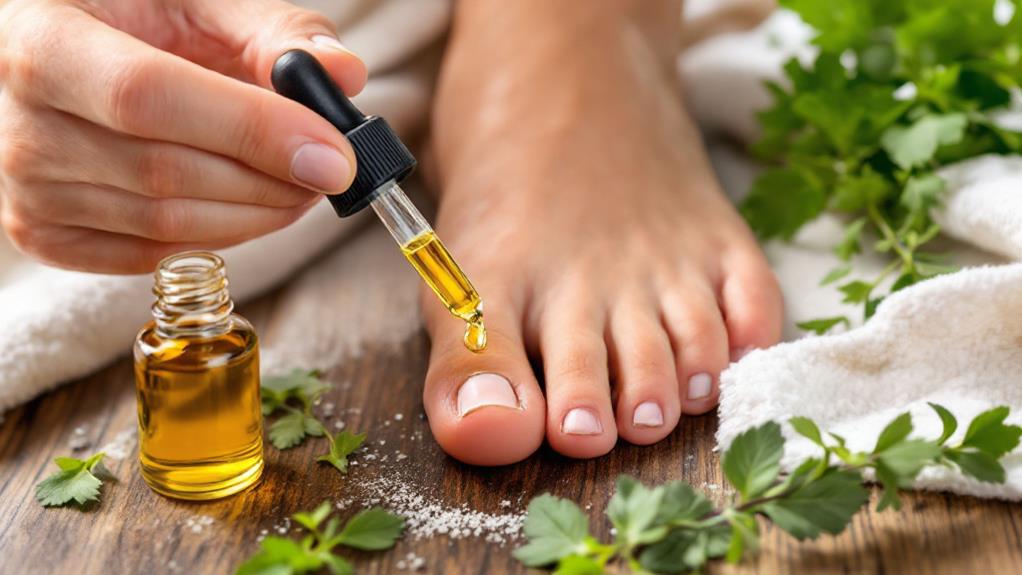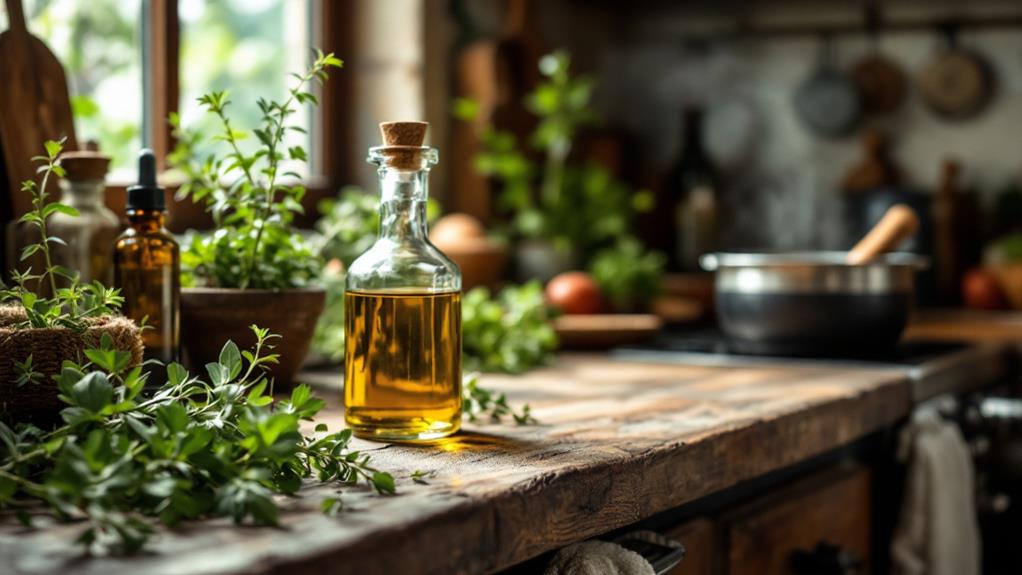Can You Make Your Own Essential Oils? A Step-by-Step Guide
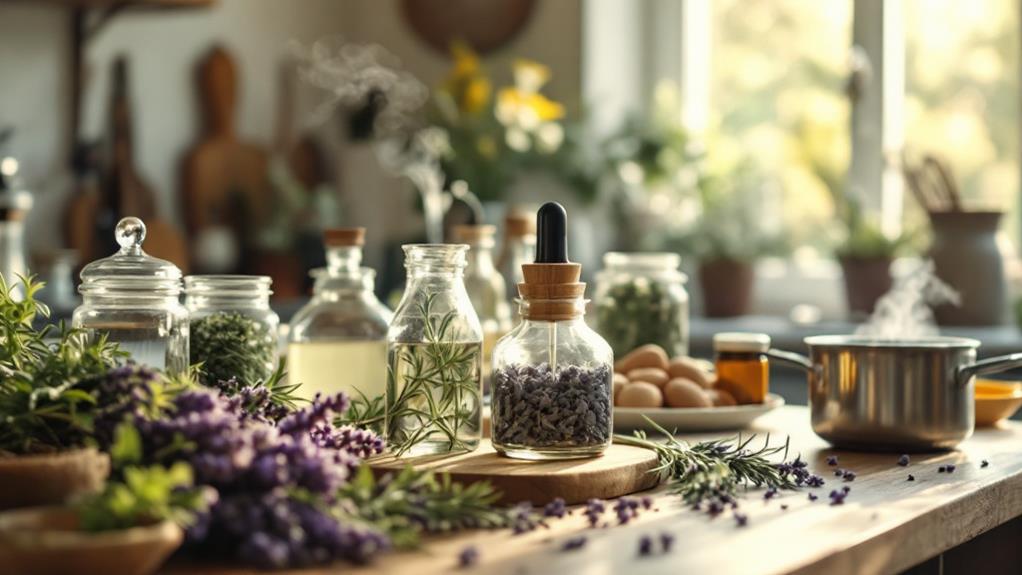
Yes, you can make your own crucial oils at home and have full control over their quality. Start by selecting organic, fresh plants like lavender or citrus zest for a robust aroma. Choose an extraction method such as steam distillation or cold pressing, and make certain you have a safe workspace ready. During extraction, macerate or infuse plant materials with a carrier oil, then strain and store the resulting oil in dark glass containers. Homecrafted oils allow personalization and are cost-effective, offering natural solutions tailored to your needs. By exploring further, you'll uncover tips and techniques for perfecting your process.
Understanding Essential Oils
In regard to understanding vital oils, it's important to know that these concentrated plant extracts capture the essence of numerous plants, flowers, and herbs. Fundamental oils are cherished for their natural scents and flavors, making them an integral part of aromatherapy, skincare, and household uses. When you extract fundamental oils, you're harnessing the therapeutic properties that each plant distinctively offers, like lavender's calming effect or eucalyptus's invigorating aroma.
To create homemade fundamental oils, understanding the extraction methods is key. Common techniques include steam distillation, cold pressing, and solvent extraction. Each method affects the quality and characteristics of the fundamental oils. For instance, steam distillation is widely used for multiple plant materials, while cold pressing is ideal for citrus oils. Your choice of extraction method can notably influence the final product's potency and aroma.
When you venture into making homemade fundamental oils, keep in mind that different plant materials yield differing amounts of oil. While rose petals might produce a scant 0.02% oil, pine resin can yield up to 35%. As a result, the selection of plant materials is vital to guarantee you achieve the desired aroma and therapeutic properties in your homemade creations.
Choosing Your Plant Materials
Selecting the right plant materials is essential for creating high-quality fundamental oils. Focus on fresh flowers, herbs, and spices since they produce stronger aromas than dried options. Choose organic and sustainably sourced plants to guarantee the purity of your primary oils while supporting eco-friendly practices. Popular plants to take into account include lavender, rosemary, jasmine, and citrus zest from lemons or oranges. These can be combined to create personalized scent profiles, allowing for a custom blend that suits your needs.
Timing your harvest is imperative. Pick flowers when they're half open, ideally in the morning, to preserve their volatile essences before the heat causes evaporation. This will ensure that the primary oils you produce are as fragrant and potent as possible. Once you've chosen your plant materials, you'll need to infuse them with a suitable carrier oil. Olive, safflower, or almond oils are excellent choices for this process. They help extract and carry the plant's essence without overpowering its natural scent.
Selecting Extraction Methods
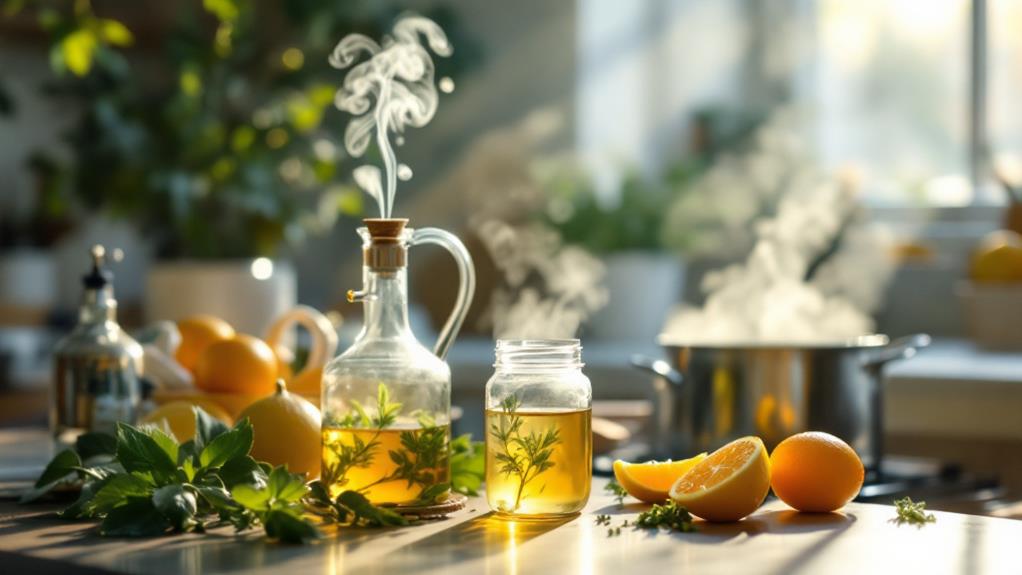
Once you've gathered your chosen plant materials, the next step involves deciding how to extract their fragrant essences. The method you choose can greatly impact the quality and yield of your vital oils. Steam distillation is a popular technique, especially for extracting volatile compounds from diverse plant materials. It requires precise temperature control, usually between 80°C to 100°C (176°F to 212°F), to guarantee the oils maintain their integrity. This method is particularly effective for herbs and flowers.
If you're working with citrus fruits, cold pressing might be your go-to. This method uses mechanical pressure to extract oils from citrus peels without heat, preserving the natural aroma and properties of the oils. It's a great choice if you want to capture the bright, fresh scent of citrus.
For a more experimental approach, consider combining methods. You might start with solvent extraction to dissolve the vital oils from plant material using ethyl alcohol. Afterward, you can distill to separate the alcohol, enhancing your oil yield and quality. Each method offers its own benefits, so choose the one that best suits your plant material and desired outcome.
Preparing for Extraction
To get started with the extraction process, focus on preparing your materials and workspace. Begin by selecting high-quality, organic plant materials like fresh herbs, flowers, or citrus zest. These will give you the best aroma and potency for your vital oils. Once you've chosen your plant material, decide on an extraction method that suits your needs, such as oil infusion or steam distillation.
Next, gather your materials. You'll need non-metal containers for mixing and storing your vital oils, a strainer for separating the plant material, and either a carrier oil like olive or almond oil, or ethyl alcohol to aid in the extraction process. Make sure your workspace is safe and stable, ideally away from children and pets. Timing is paramount too—consider harvesting your plant materials in the morning when the volatile oils are most concentrated.
Conducting the Extraction Process
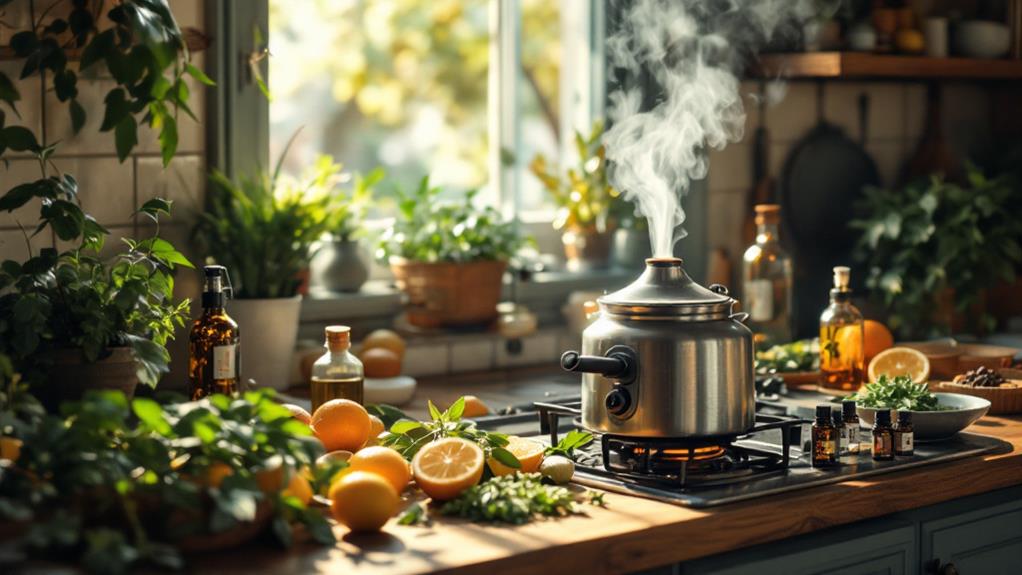
With your materials prepped and workspace ready, it's time to start the extraction process. Begin by selecting high-quality, organic plant materials like herbs, flowers, or citrus zest. This guarantees that your vital oils are free from harmful pesticides. Once you've chosen your plant material, you'll need to pick a suitable extraction method. Maceration is a popular choice, where you heat a carrier oil, such as olive or almond oil, with the plant material in warm water, enhancing aroma absorption.
Combine the plant material with your carrier oil in a non-metal container. Let this mixture infuse undisturbed for 24 to 48 hours to effectively extract the vital oils. After the infusion period, strain the mixture using a cheesecloth or fine strainer. Make certain to squeeze out as much liquid as possible to optimize your yield.
For a more potent scent, you can reinfuse the strained oil with fresh plant materials. Repeat the process until you achieve the desired aroma strength. This may require several rounds of infusion, but the result will be a richer, more aromatic vital oil that you've crafted yourself.
Storing Your Essential Oils
Proper storage is crucial to maintaining the quality and effectiveness of your homemade indispensable oils. Start by using dark glass containers. These protect your fundamental oils from light exposure, which can degrade their quality and potency over time. Once you've bottled your oils, keep them in a cool place. Aim for a stable environment with temperatures between 60°F to 70°F (15°C to 21°C) to optimize their shelf life, which typically ranges from 6 to 12 months.
Always label your containers clearly, noting the type of oil and the date you produced it. This simple step helps avoid confusion and guarantees you use each oil safely and effectively. Don't forget to check your storage conditions regularly. Look out for any changes in color, scent, or consistency, as these can be signs of spoilage or contamination.
To maintain their integrity, make certain your essential oil containers are tightly sealed. This prevents oxidation and evaporation, keeping your oils fresh and potent. By paying attention to these details, you'll assure that your homemade essential oils stay in top condition for as long as possible.
Benefits of Homemade Oils
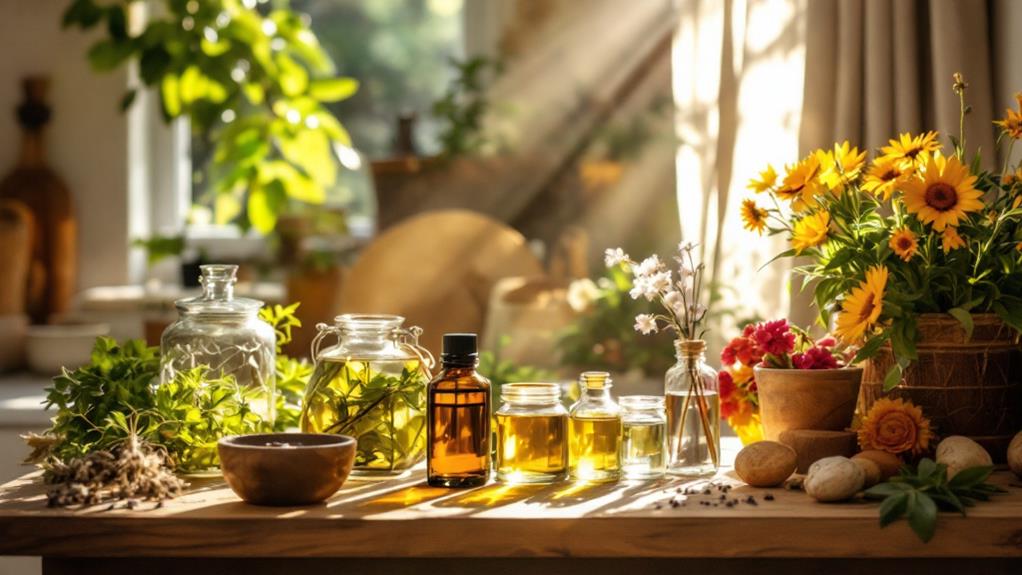
Once you've mastered the art of storing your fundamental oils, it's time to investigate the many benefits of making them at home. By crafting vital oils at home, you gain complete control over the quality and purity of the ingredients. This means you can ascertain your oils are free from harmful additives and chemicals, providing peace of mind and healthier options for your wellness routine. Making homemade oils can also be a cost-effective alternative to buying commercial options. You can save money by using locally sourced or even homegrown plants, which not only enhances the oil content but also supports local economies.
Moreover, creating your own vital oils fosters a deeper connection to nature. You gain a greater understanding and appreciation for the plants and their therapeutic properties, enriching your personal experience with each drop. Using organic and sustainably sourced plant materials aligns with eco-friendly practices, reducing the carbon footprint linked to commercial production and transportation. Plus, DIY oils allow for personalization to suit your scent preferences and therapeutic needs. They make unique gifts and valuable supplements to your wellness routine, tailored just for you. Welcome the adventure of making vital oils yourself and enjoy the numerous benefits it brings.
Sustainable Practices and Tips
When diving into the world of sustainable practices for making your own crucial oils, choosing organic and locally sourced plants is imperative. This guarantees your oils are free from harmful pesticides, supports sustainable farming, and enhances local economies. By selecting these plant materials, you're taking a substantial step toward reducing your environmental impact.
To further align with sustainability, use eco-friendly extraction methods like maceration or cold pressing. These techniques minimize energy consumption while still producing high-quality crucial oils. Plus, they're easier on the environment compared to conventional methods that require more resources. Once you've extracted the oils, consider reusing the plant materials for multiple infusion rounds. This practice optimizes yield and considerably reduces waste, making your oil production even more sustainable.
Storing your homemade crucial oils correctly is another significant aspect. Use dark glass containers to protect them from light degradation, which extends their shelf life and maintains potency. This simple step guarantees that your eco-friendly efforts last longer and continue to benefit you over time. By incorporating these sustainable practices, you not only create high-quality oils but also contribute to a healthier planet.
Engaging With the Community
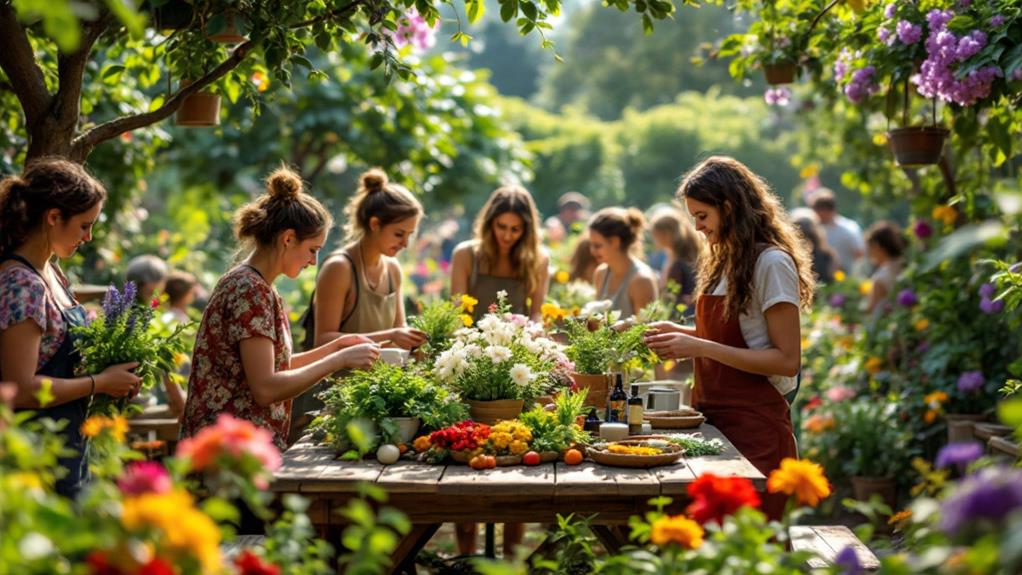
Having mastered sustainable practices in oil extraction, you might find the next step involves reaching out to like-minded individuals. Engaging with online forums and communities is a fantastic way to explore deeper into the world of crucial oils. These platforms allow you to share personal experiences and tips, fostering collaborative learning. Community discussions often illuminate the distinctions between homemade infusions and true distillation methods. This information can be invaluable, regardless if you're a beginner or an old hand at crafting essential oils.
You'll find that members are genuinely interested in the results and techniques shared by others. This environment encourages you to experiment and get creative with your essential oil crafting. Continuous dialogue within these communities supports a lively knowledge exchange about sustainable practices. You'll learn about the importance of using organic, locally sourced ingredients, which can greatly improve your oil-making process.
Sharing your outcomes helps you grow individually and contributes to the community's collective understanding of effective methods and challenges. By participating in these discussions, you're not just improving your skills but also helping others succeed in their essential oil experiences. It's a win-win for everyone involved!


